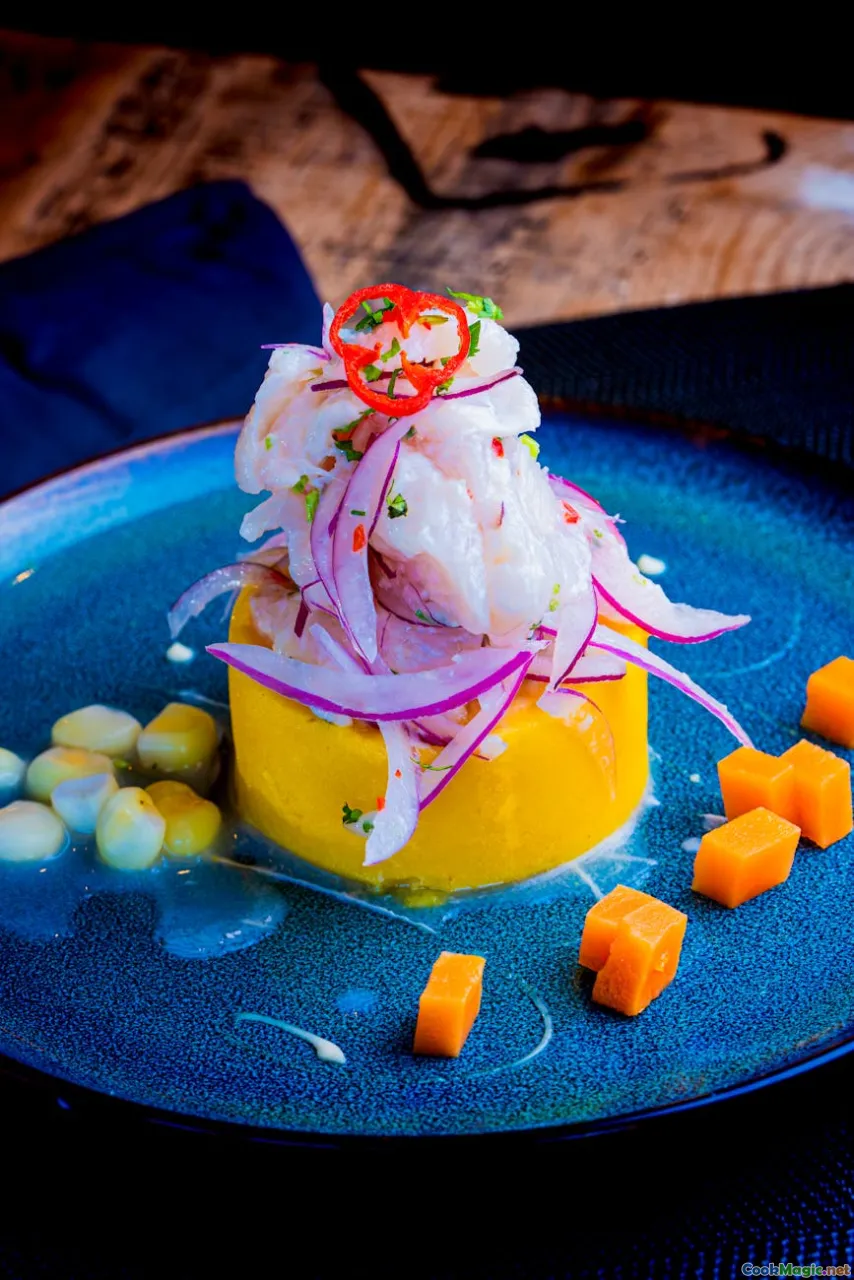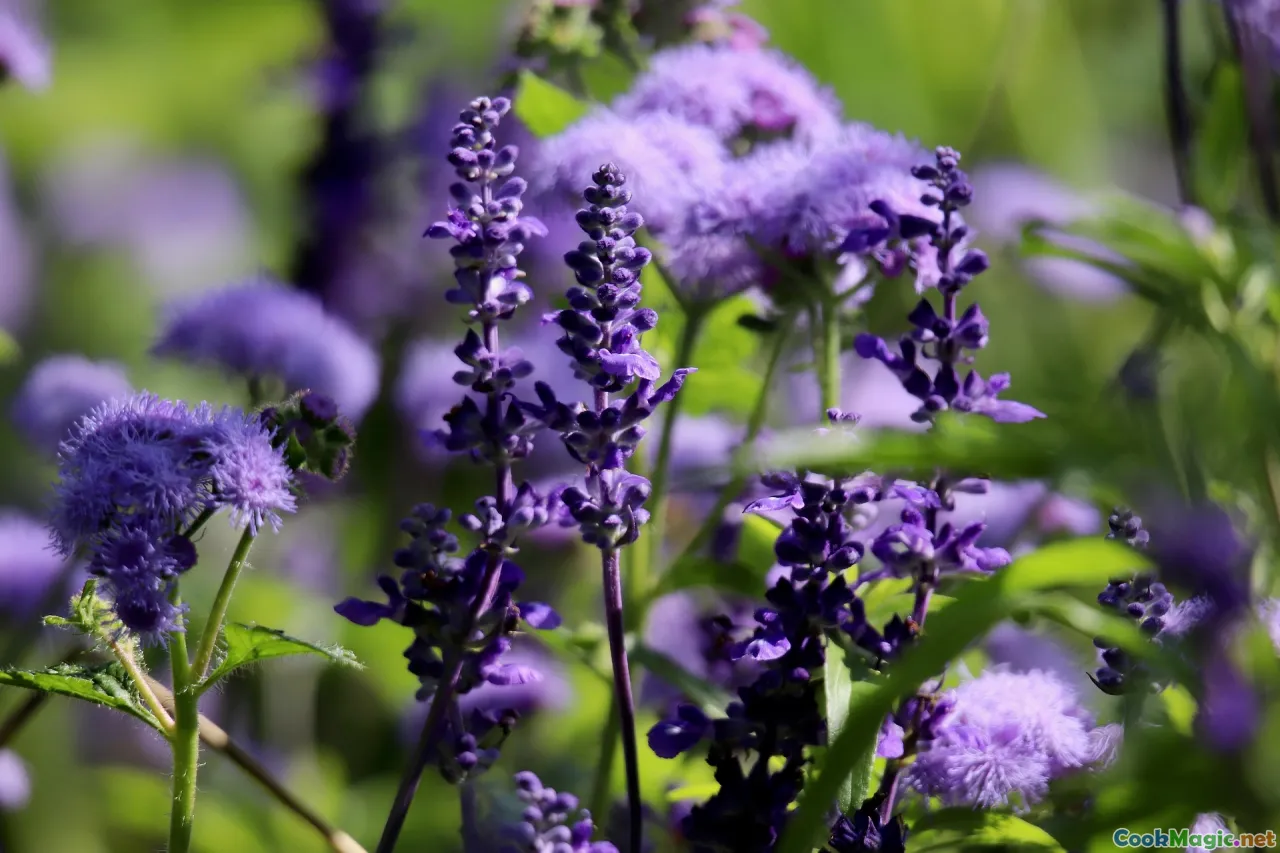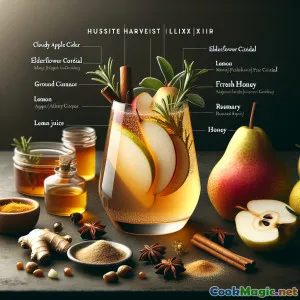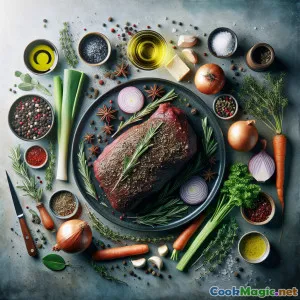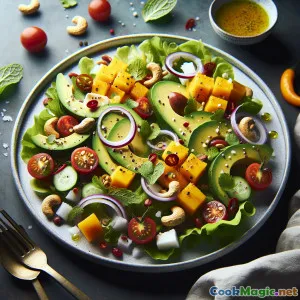
Frybread croccante di mais blu con salvia e nota erbacea
(Crisp Blue Corn Sage Frybread with Herbal Flare)
(0 Recensioni)0
1,186
luglio 16, 2025
Segnala un problema
Ingredienti
-
180 grams Farina di mais blu
( Conferisce dolcezza terrosa e un colore distintivo)
-
120 grams Farina 00
(Aiuta con la struttura)
-
10 grams Foglie di salvia fresche
(Trita finemente per un sapore aromatico)
-
3 grams sale marino fine
(Equilibra i sapori)
-
7 grams Lievito in polvere
(Per una consistenza leggera e soffice)
-
120 grams Yogurt Greco
(Aggiunge cremosità e umidità)
-
100 ml Latte intero
(Aiuta a legare l'impasto)
-
250 ml Olio vegetale
(Frittura a fuoco basso)
-
15 grams Burro
(Per spennellare il pane fritto caldo)
-
2 grams Sale marino grosso
(Cospargere sul pane fritto caldo per finire)
( Conferisce dolcezza terrosa e un colore distintivo)
(Aiuta con la struttura)
(Trita finemente per un sapore aromatico)
(Equilibra i sapori)
(Per una consistenza leggera e soffice)
(Aggiunge cremosità e umidità)
(Aiuta a legare l'impasto)
(Frittura a fuoco basso)
(Per spennellare il pane fritto caldo)
(Cospargere sul pane fritto caldo per finire)
Nutrizione
- Porzioni: 4
- Dimensione Porzione: 1 giro (circa 100g)
- Calories: 550 kcal
- Carbohydrates: 60 g
- Protein: 20 g
- Fat: 25 g
- Fiber: 5 g
- Sugar: 5 g
- Sodium: 500 mg
- Cholesterol: 30 mg
- Calcium: 150 mg
- Iron: 2.5 mg
Istruzioni
-
1 - Preparare gli Ingredienti dell'Impasto:
In una ciotola grande, combina farina di mais blu, farina per tutti gli usi, foglie di salvia finemente tritate, sale marino fine e lievito in polvere.
-
2 - Combina gli ingredienti umidi:
In una caraffa, sbatti insieme lo yogurt greco e il latte intero fino a renderli molto lisci.
-
3 - Fare l'Impasto:
Versa il miscuglio di yogurt e latte negli ingredienti secchi. Mescola con una forchetta o con le mani fino a formare un impasto umido e morbido. Evita di lavorare troppo l’impasto, poiché potrebbe indurire il pane.
-
4 - Lasciare riposare e modellare l'impasto:
Copri la ciotola e lascia riposare l'impasto per 5 minuti. Quindi dividilo in 4 pezzi uguali. Con le mani leggermente unte d'olio, appiattisci ogni pezzo formando un disco piatto di circa 12 cm di diametro e 1 cm di spessore.
-
5 - Scaldare l'olio:
In una padella pesante, riscalda l'olio vegetale a fuoco medio-alto finché non brilla ma non fuma.
-
6 - Friggere l'impasto:
Aggiungi con cura uno o due pezzi alla volta nell'olio caldo. Friggi per 2-3 minuti da un lato finché non sono gonfi e dorati, poi gira e friggi dall'altro lato. Devono essere croccanti ai bordi e teneri al centro. Usa una pinza per rimuoverli e posizionarli su una griglia rivestita di carta assorbente.
-
7 - Completare e Servire:
Se desideri, spennella i frybreads caldi con burro fuso e cospargi di sale marino grosso. Servili caldi così come sono o accompagnati da yogurt alle erbe, miele o creme salate.
In una ciotola grande, combina farina di mais blu, farina per tutti gli usi, foglie di salvia finemente tritate, sale marino fine e lievito in polvere.
In una caraffa, sbatti insieme lo yogurt greco e il latte intero fino a renderli molto lisci.
Versa il miscuglio di yogurt e latte negli ingredienti secchi. Mescola con una forchetta o con le mani fino a formare un impasto umido e morbido. Evita di lavorare troppo l’impasto, poiché potrebbe indurire il pane.
Copri la ciotola e lascia riposare l'impasto per 5 minuti. Quindi dividilo in 4 pezzi uguali. Con le mani leggermente unte d'olio, appiattisci ogni pezzo formando un disco piatto di circa 12 cm di diametro e 1 cm di spessore.
In una padella pesante, riscalda l'olio vegetale a fuoco medio-alto finché non brilla ma non fuma.
Aggiungi con cura uno o due pezzi alla volta nell'olio caldo. Friggi per 2-3 minuti da un lato finché non sono gonfi e dorati, poi gira e friggi dall'altro lato. Devono essere croccanti ai bordi e teneri al centro. Usa una pinza per rimuoverli e posizionarli su una griglia rivestita di carta assorbente.
Se desideri, spennella i frybreads caldi con burro fuso e cospargi di sale marino grosso. Servili caldi così come sono o accompagnati da yogurt alle erbe, miele o creme salate.
Ulteriori informazioni su: Frybread croccante di mais blu con salvia e nota erbacea
Blue Corn Sage Frybread — Imbued with Earthiness and Tradition
A culinary departure from the conventional, Blue Corn Sage Frybread is an aromatic reinvention of classic skillet breads, marrying bold British-style bread craft with centuries-old Native American ingredients and herbaceous notes from fresh sage. This unique fusion celebrates both the versatility of blue cornmeal, famous for its nutty sweetness and striking color, and the fragrant subtlety of sage—an herb adored in English cuisine.
A Journey of Ingredients
What sets blue corn apart isn’t just its vibrant hue: this heirloom grain is revered for a higher proportion of protein and antioxidants compared to yellow corn, resulting in a mildly sweet, almost floral undertone in baked goods. Pairing this with sage gives the frybread a haunting, savory twist, perfect for those who delight in herbal flavors and crave a break from typical comfort breads.
This recipe welcomes a British touch with Greek yogurt, which offers both moisture and richness, akin to the cream-enhanced doughs of traditional scones but without crossing into pastry territory. The result? Bread with a plush crumb, a golden and crisped exterior, and many delicate herbal flecks punctuating every bite.
Preparation and Cooking Tips
- Handle Gently: For the lightest texture, refrain from overmixing your dough—this preserves tenderness.
- Oil Temperature: Ensure the oil is thoroughly hot before adding the rounds; too cool, and the dough will absorb excess oil and become greasy. Medium-high is optimal (around 185°C or 365°F).
- Herbal Variation: Fresh sage animates this frybread, but a touch of fresh thyme or rosemary can harmonize well if sage isn’t available or if want to bolster the herbal essence.
- Toppings: Frybread is immensely adaptable. Enjoy it simply, or brush the finished round with melted butter and a sprinkle of flaky salt. For a modern British or fusion touch, top with roasted pepitas, herbed yogurt, a drizzle of honey, or serve base-style as an accompaniment to robust stews, bean chilis, or sharp cheeses.
Historical and Cultural Resonance
Blue corn, native to the Southwestern United States, carries deep indigenous significance. Known as Hopi maize, blue corn is considered sacred and embodies sustenance, community, and resilience. Frybread itself has a complex ancestry—emerging from the adversity of displacement and ration flour, it was a resourceful creation born within Native American communities during periods of hardship. While England is new to blue corn, the British palate is no stranger to herbal breads or the creative reinterpretation of global ingredients.
By crafting Blue Corn Sage Frybread, we honor the convergence of traditions. British cuisine, famous for its comfort-laden loaves and savory bakes, here fuses respectfully with an Indigenous staple—evocative of the mingling and evolution that characterize modern food culture.
Serving and Storing Suggestions
This frybread shines when served fresh and warm, ideally straight from the pan. Pair as an aromatic snack with afternoon tea, serve alongside robust vegetarian soups, or elevate supper at a picnic. For pre-preparation, you can form the dough rounds ahead and keep covered for up to 2 hours; fry just before serving for maximum crispness.
Store cooled bread, uncovered, for up to 6 hours—reheat on a dry skillet for an encore performance of golden crunch.
Personal Thoughts
Blue Corn Sage Frybread embodies a feast for the senses: earthy blue, sunny gold, a cloud-soft interior, and a whiff of garden sage. Each bite honors what has been and looks forward to what can be, exemplifying Britain’s embrace of culinary diversity at its warmest edge.

